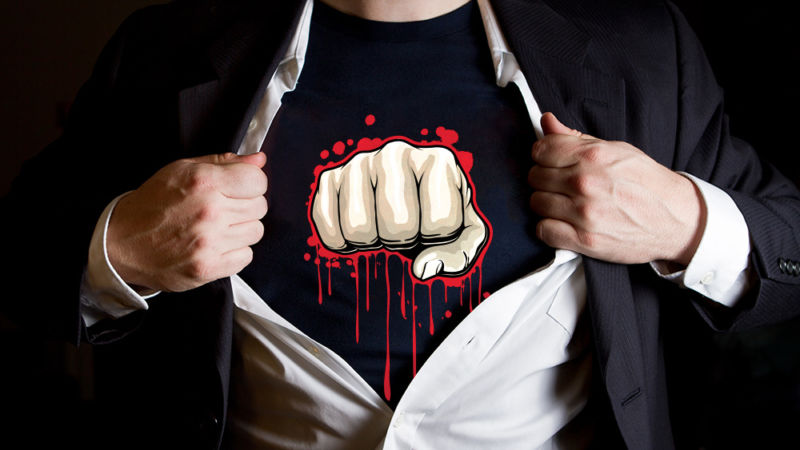
It's superheroes and not their super-villain counterparts that we should really be afraid of. This idea has been explored in a number of superhero movies, including such diverse fare as The Incredibles, Watchmen, and the post-Sokovia adventures of the Marvel Cinematic Universe. In each, lawmakers shackle our protagonists in response to the collateral damage caused when they step in to save the day.
But perhaps collateral damage is not what we should be worried about. According to a new study, the "good guys" are actually significantly more violent than the antagonists they're trying to stop. These findings were presented on Monday at the annual meeting of the American Academy of Pediatrics. Pennsylvania pediatrician Robert Olympia and his colleagues sat through 10 superhero movies released in 2015 and 2016, cataloging each specific act of violence and noting whether it was committed by a protagonist or villain.
As anyone who has sat through a recent summer superhero tentpole can attest, there is a lot of violence to catalogue—on the order of 23 acts per hour for the good guys, with just 18 violent acts per hour for the bad guys. And it is mostly guys—male characters were five times more likely to engage in violence than female characters.
However a closer look at the study's findings reveals a slightly more nuanced picture. Although protagonists committed more acts of violence, the most common of these was "fighting," with 1,021 instances by heroes and only 599 instances by villains. There was less of a gap when it came to "use of a lethal weapon," although here, too, the heroes were overrepresented—659 times versus 604 for the baddies.
Our heroes even committed more acts categorized as "murder:" 168 times to 93 by evil-doers. In fact, "bullying/intimidation/torture" was the only category where the heroes actually look like heroes, engaging in such behavior 144 times compared to 237 instances by the films' antagonists. (I should note that the last time I tackled the thorny issue of übermensch behaving badly, it involved The Flash: illegal detention in solitary confinement and medical experiments without the participants' consent.)There is, of course, a serious reason for counting the cinematic punch-ups and beatdowns, at least from the perspective of a pediatrician. "Pediatric health care providers should educate families about the violence depicted in this genre of film and the potential dangers that may occur when children attempt to emulate these perceived heroes," Dr. Olympia said in a statement.
Another of the authors, medical student John Muller (who presented the research findings), suggested families watch these films together to discuss the consequences of violence. "In passively co-viewing violent media, there is an implicit message that parents approve of what their children are seeing, and previous studies show a corresponding increase in aggressive behavior," Muller said. "By taking an active role in their children's media consumption by co-viewing and actively mediating... parents help their children develop critical thinking and internally regulated values."
reader comments
216